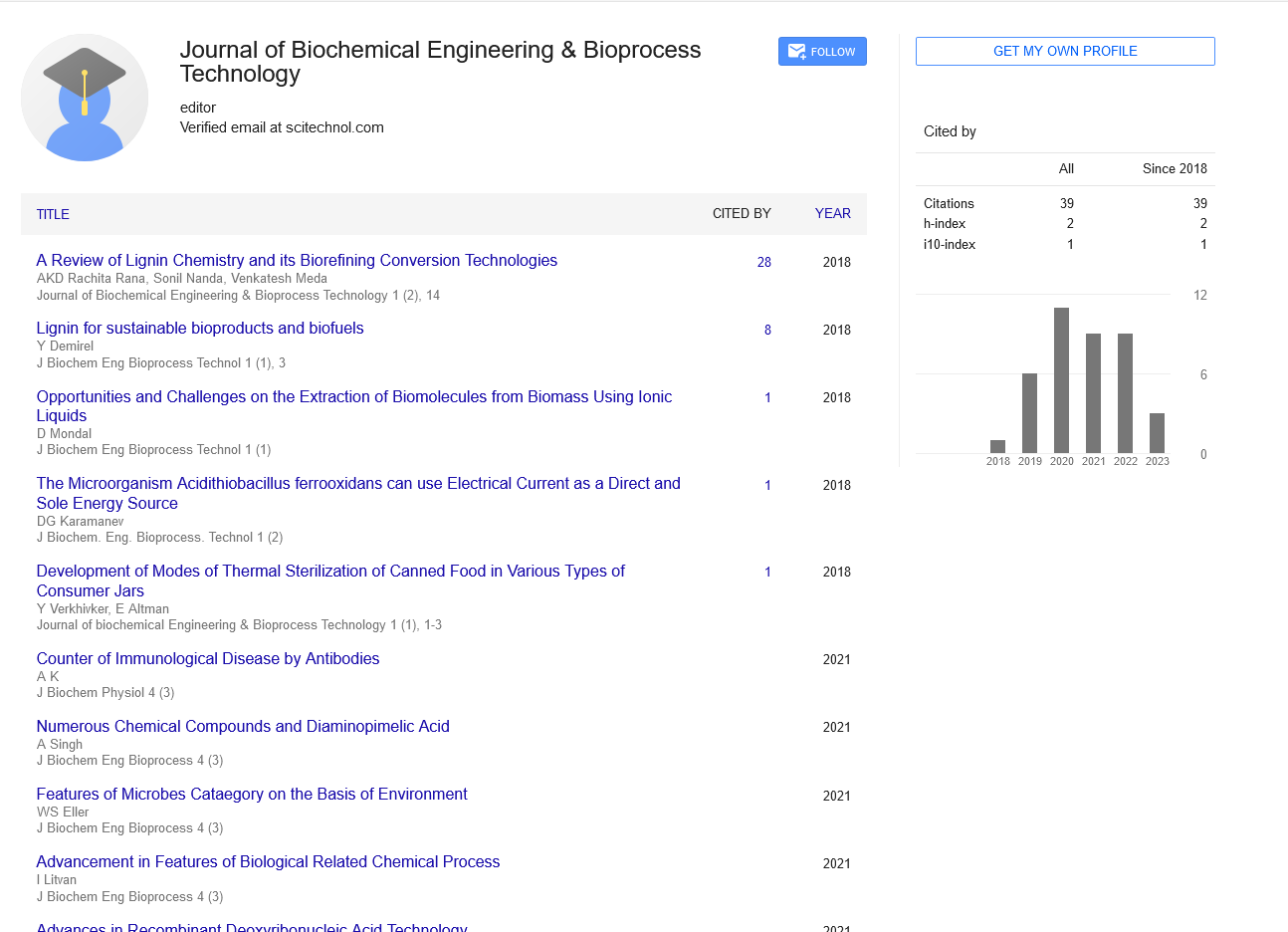Commentary, J Biochem Eng Bioprocess Vol: 6 Issue: 1
Microbial Nutrient Acquisition Strategies in Soil Environments
Dimitre Karamanev*
1Department of Microbial Biotechnology, National Center for Biotechnology, Cantoblanco, Spain
*Corresponding Author: Dimitre Karamanev
Department of Microbial
Biotechnology, National Center for Biotechnology, Cantoblanco, Spain
E-mail: karamanevdimitre@yahoo.com
Received date: 22 February, 2023, Manuscript No. JBEBT-23-96109;
Editor assigned date: 27 February, 2023, Pre QC No. JBEBT-23-96109(PQ);
Reviewed date: 14 March, 2023, QC No. JBEBT-23-96109;
Revised date: 21 March, 2023, Manuscript No: JBEBT-23-96109(R);
Published date: 28 March, 2023, DOI: 10.35248/jbebt.1000054
Citation: Karamanev D (2023) Microbial Nutrient Acquisition Strategies in Soil Environments. J Biochem Eng Bioprocess 6:1.
Description
Soil is a complex and diverse environment that is inhabited by a vast array of microorganisms. These microorganisms play an essiential role in the cycling of nutrients and the maintenance of soil health. One of the key challenges faced by these microorganisms in soil environments is nutrient acquisition. In order to survive and thrive, microbes must be able to obtain the nutrients they need from their surroundings. In this essay, we will explore the various strategies that microorganisms use to acquire nutrients in soil environments. One of the primary strategies used by microorganisms to acquire nutrients in soil environments is through the use of extracellular enzymes. These enzymes are produced and secreted by microbes and are capable of breaking down complex organic molecules into smaller, more easily absorbed forms. For example, many soil microbes produce enzymes that break down cellulose, a complex carbohydrate found in plant cell walls, into simpler sugars that can be used as an energy source. Similarly, many microbes produce enzymes that break down proteins and lipids into their constituent amino acids and fatty acids, respectively. These smaller molecules can then be absorbed and used by the microbe for growth and metabolism. Another strategy used by microorganisms to acquire nutrients in soil environments is through the uptake of Dissolved Organic Matter (DOM). DOM is a complex mixture of organic molecules that is released into the soil environment by living and dead organisms. Microbes can use specialized transporters to take up DOM and use it as a source of carbon, nitrogen, and other nutrients. This strategy is particularly important in nutrient-poor soils, where the availability of organic matter may be limited.
In addition to extracellular enzymes and DOM uptake, some microorganisms are able to form mutualistic relationships with other organisms in order to acquire nutrients. For example, some soil bacteria are able to form symbiotic relationships with plant roots, exchanging nutrients and other compounds in a mutually beneficial manner. These bacteria, known as rhizobia, are able to fix atmospheric nitrogen into a form that can be used by the plant. In exchange, the plant provides the bacteria with carbohydrates and other nutrients. Similarly, mycorrhizal fungi form mutualistic relationships with plant roots, providing the plant with nutrients such as phosphorus and receiving carbon in return. Finally, some microorganisms are able to scavenge nutrients from other microbes through a process known as predation. These microorganisms, known as bacterivores, feed on other bacteria and can obtain nutrients such as amino acids and nucleotides from their prey. Similarly, some soil fungi are able to feed on other fungi and obtain nutrients in this way. In order to effectively acquire nutrients in soil environments, microorganisms must be able to adapt to changing conditions. One way in which microorganisms can do this is through the production of secondary metabolites. These molecules are produced by microbes in response to environmental stressors, such as nutrient limitation or competition with other organisms. Secondary metabolites can have a range of functions, including antimicrobial activity, metal chelation, and the ability to scavenge nutrients from the environment. Another way in which microorganisms can adapt to changing conditions is through the formation of biofilms. Biofilms are complex communities of microorganisms that adhere to surfaces and secrete a protective matrix of extracellular polymeric substances. This matrix can help to protect the microorganisms from environmental stressors and allow them to better scavenge nutrients from the surrounding environment.
In conclusion, the acquisition of nutrients is a crucial aspect of microbial survival and growth in soil environments. Microorganisms have evolved a range of strategies to acquire nutrients, including the use of extracellular enzymes, DOM uptake, mutualistic relationships with other organisms, and predation. Additionally, microorganisms can adapt to changing conditions through the production of secondary metabolites and the formation of biofilms.
 Spanish
Spanish  Chinese
Chinese  Russian
Russian  German
German  French
French  Japanese
Japanese  Portuguese
Portuguese  Hindi
Hindi 